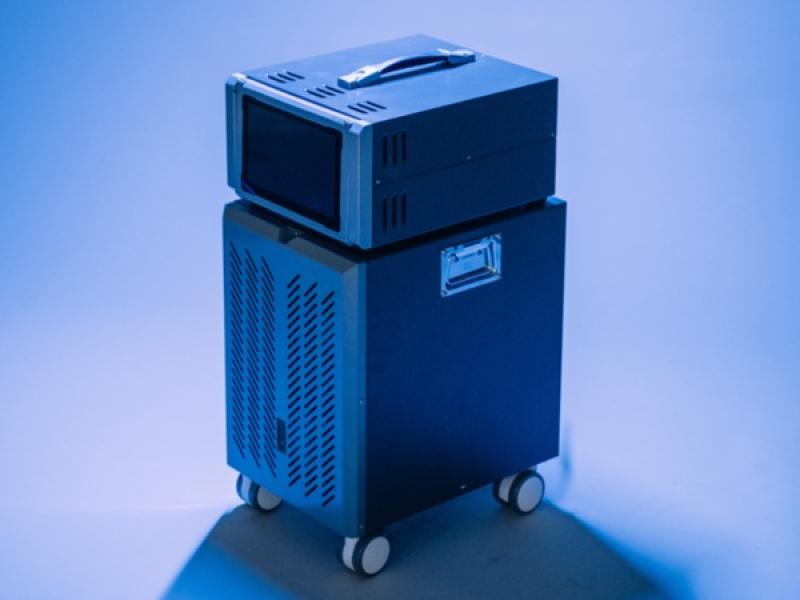
PCL Constructors Canada Inc. has achieved LEED certifications for its two hospitals in Ontario, making the facilities trailblazers in a building category notorious for the difficulty in achieving energy efficiency.
The Centre for Addiction and Mental Health’s (CAMH) McCain Complex Care and Recovery Centre and the Crisis and Critical Care Building in Toronto, and Mackenzie Health’s Cortellucci Vaughan Hospital received LEED Gold and Silver certifications, respectively.
The McCain Complex on Queen St. West in Toronto was part of CAMH’s largest redevelopment program. PCL completed its work on the project in October 2021.
Cortellucci Vaughan, which PCL finished in October 2020, is the first hospital in the City of Vaughan and the first net-new hospital built in Ontario in over 30 years.
“Feasibility does come into play a lot with what we do and trying to hit the requirements set forth by the province, not going too far beyond that; you have to remember that you're in a competition (for the contract),” said Stephen Montgomery, PCL Toronto’s sustainable construction advisor. “So if you're going to show your hand and come in with something that's significantly higher than everyone's budget, it's got to be representative."
Building to a LEED Silver standard allowed PCL to incorporate extensive sustainability features while working within the parameters set out for the project by the province.
"What stops us from going beyond LEED Silver? Again, that's the nature of the competition. I think in the coming years, you're going to see that change, (but) the current perspective is still coming into play.”
The group of independent construction companies that make up Edmonton-based PCL operate in the U.S., Canada, the Caribbean and Australia. They operate in the civil infrastructure, heavy industrial and buildings markets. Together, these companies have an annual construction volume of more than $8 billion.
CAMH and PCL
CAMH is Canada’s largest mental health and addictions teaching hospital. The McCain Complex contains a mental health library, a 290-seat auditorium and a simulation learning centre, while the Crisis and Critical Care building has a 24-hour emergency department and a complex mental illness unit. Combined, the two facilities will support 235 beds for the acutely ill and patients with complex mental health issues.
CAMH’s 600,000-square-foot redevelopment project earned 66 points under the LEED v2009 New Construction Rating System. It has an energy-use intensity (EUI) of about 1.3 gigajoules per square metre.
“You're finding that 18 out of 35 points for health care is often quite common," Montgomery said, comparing the facility score to others in the industry.
It includes a 17,000-square-metre green roof and vegetated space that accounts for 62 per cent of the site area. PCL also instituted a high-efficiency irrigation system that eliminated the use of potable water for irrigation. Nearly all – 98 per cent – of wood materials used were certified by the international non-profit Forest Stewardship Council as being responsibly harvested.
The project also included a more efficient building envelope focusing on minimizing thermal bridging and optimizing solar heat gains.
Cortellucci Vaughan and PCL
Cortellucci Vaughan, which broke ground in October 2016, earned 54 points in its certification. Located on a 40-acre greenfield site, the 1.2-million-square-foot hospital has capacity for over 350 beds.
The hospital has an EUI of about 3 gigajoules per square metre, relating to processes like steam cleaning of medical devices, radiology, 24/7 emergency service and more.
The hospital utilized green roofs, larger patient windows allowing for more sunlight, and low-emitting adhesives, sealants, paints and flooring systems. PCL also constructed terraced gardens and stone retaining walls.
Additionally, 90.39 per cent of total waste was diverted on site during construction.
There’s typically difficulty in attaining energy and atmosphere credits within LEED certification, thanks to the need to cycle massive amounts of air. Montgomery attributes PCL achieving 17 out of 35 of those credits – which he called “pretty phenomenal” – to the collaborative modelling prior to construction.
“The CSA (standards organization) codes are a significant part of that as well. In the United States, hospitals can use return air paths. In Canada, we're ducting all the way back to each room. It makes our hospitals better, but it makes our hospitals very expensive to run.”
Mackenzie Health serves over 550,000 residents in the western York region of the Greater Toronto Area. It includes the Mackenzie Richmond Hill Hospital.
Future considerations
While neither facility had a zero-carbon target, there were plans for carbon reductions. Both buildings employ advanced metering to report energy uses, monitored 24/7 by PCL's facility maintenance partners. The PCL team faces financial penalty for missing its energy targets.
In both cases, geothermal technology was also considered in the planning stages, but was discarded as not feasible considering the timeline for the project.
“You're on a timeline to get an adequately green design in front of the client,” he said. “So as it ticks along, you either get it in or you don't.”
Solar energy is also less of an option for the health-care sector due to its EUI. Much more space than the roof would be required to cover even a small portion of its operations.
The next steps for both buildings, however, would be decarbonization roadmaps. Montgomery said the energy systems lend themselves well to lower-carbon solutions and upgrades.
“It would be maybe looking at ways to try and retrofit their boiler plant. Most hospitals all rely on natural gas boiler plants, which until last year were a perfectly clean alternative to get your energy from, but now they're pretty much the target within buildings for long-term change.”










